Samsung's Texting Trio for T-Mobile
Jun 23, 2010, 11:45 PM by Rich Brome
Hands-on with Samsung's three new affordable messaging phones for T-Mobile, all with QWERTY keyboards: the Gravity 3, Gravity T, and ":)" (Smiley).
Intro
Samsung's three new phones - the Gravity 3, Gravity T, and ":)" Smiley - are all affordable messaging phones. They're not smart phones, but they do offer more than your average free phone. Obviously they all sport QWERTY keyboards, but you'll also find features like 3G data, YouTube, and some basic social networking. AT&T refers to these kinds of devices as "quick messaging devices."
There are a lot of other similarities between the three phones. The Gravity T is slightly higher-end, and the Smiley slightly lower-end, but we're still surprised the price difference is more than $50; the Gravity T doesn't seem that much better. They all have basic features. There are no high-resolution cameras, unexpected features, or smartphone OSes here; not even a standard audio jack. But for someone looking for a cheap texting phone, these may be worth a look.
Indeed, the main feature of all three phones is arguably the QWERTY keyboard. Fortunately, all three keyboards are quite good.
Gravity 3
The Gravity 3, naturally, follows in the footsteps of the Gravity and Gravity 2.
Not much has changed since the Gravity 2. Hardly anything, in fact. The styling is updated with more curves. Whether it looks better is a matter of opinion. The QWERTY keyboard now has offset rows instead of a grid pattern, to more closely match the familiar layout of a full-size computer keyboard. Otherwise, the slider form factor is the same, with both numeric and QWERTY keyboards, so you can choose to use the phone one- or two-handed, as the situation dictates. The key features are all the same.
There are no special finishes on the body; it's all plastic and it feels like it. Still, it feels solid and mostly well-built. The one exception is the slide mechanism. It can jam and be difficult to close if you try to close it from just one end. You need to hold it with two hands - or one hand near the middle - to close it reliably.
All of the keys feel good and work well. The QWERTY text keys have a slight dome shape to them, just enough to make them easy to feel out. The keyboard is very wide - your thumbs will get quite a workout typing a long email - but it wasn't so wide that it was uncomfortable for my relatively small hands.
One odd design choice is the location of the soft keys when the slide is open. Instead of being below the display where they belong, they're down on either side of the space bar. Not only are they far from the options they correspond with on the display, but they're not aligned, either, being offset a bit to the right. That's unintuitive and annoying when you're learning the phone, although it's the kind of thing most people would adjust to after a short while.
The display is a tiny bit larger than the Gravity 2, but not much. For this class of phone, the display is large enough and the QVGA resolution is typical. The display looks decent, but only from straight-on; the viewing angle is poor, so this isn't a good phone for showing videos and photos to your friends.
Moving on to the interface, the menus seemed snappy, with no lag. They seemed faster than on the Smiley, in spite of the very similar software and processor.
Like most Samsungs these days, the camera interface is excellent. It sports an easy-to-use toolbar that gives you quick access to all key settings.
The Settings menu is poorly laid out. A large number of important settings are buried under a "Personalization" sub-menu, including a lot of things I would never consider "Personalization". You'd think the phone has almost none of the usual settings until you figure out this quirk.
The Gravity 3 is a perfectly decent cheap messaging phone, but it offers no real upgrades over the Gravity 2 it replaces. The Gravity 2 debuted for $30. The Gravity 3 has just gone on sale for $50. As technology progresses, most people expect phones to gain features and/or become cheaper. Therefore the Gravity 3 seems like a questionable value in offering no new features at a higher price than its predecessor.
Gravity T
The Gravity T (for touch) is one notch above the Gravity 3.
The Gravity T is a cute little size. It's not tiny, but it is smaller than the Gravity 3, and smaller than many similar touch phones with sliding keyboards. The build quality feels good. Like the Gravity 3, you won't forget this phone is all-plastic, but it doesn't feel like it'll fall apart, either. The slide mechanism seems excellent.
The keyboard is mostly similar to the Gravity 3, except the keys are flat, not dome-shaped. The keys do have a different texture than the surrounding plastic, which helps. We had no trouble typing with it, but the dome-shaped keys on the Gravity 3 were easier to use with confidence, without staring at the keyboard to keep your fingers on target. There are dedicated period, comma, question mark, .com, and emoticon keys, plus dedicated arrow keys.
The display is quite good; both larger and better-quality than the Gravity 3's screen.
The main feature is a touch screen, naturally. It's a resistive type touch panel. It's perhaps slightly above average as resistive panels go, so it works well most of the time, but it's not the best we've tried; it does miss presses on occasion.
Taking full advantage of the touch screen is a version of Samsung's TouchWiz interface. That makes the whole interface very different than the Gravity 3 or Smiley. (This isn't just a Gravity 3 with a touch screen slapped on it.) Of course there's the standard TouchWiz widgets, which are fun, but not nearly as useful as Android widgets. You can customize three separate home screens full of said widgets and swipe left or right to switch among them.
Better yet, the main menu is fully customizable. You can arrange three screens of menu options and shortcuts however you like.
The Gravity T sports Samsung's Dolphin browser, which is based on the same WebKit engine as the Android and iPhone browsers. The browser does render pages accurately enough, worlds better than the NetFront browser on the Gravity 3 and Smiley. Unfortunately, the anemic 184 MHz processor just isn't up to the task, making the browser aggravatingly slow to use. If you need to browse the (full) web, the Gravity T is certainly a better choice than the Gravity 3 or Smiley, but if you'll use it more than once in a blue moon, we'd strongly recommend a real smartphone with a real browser and a real processor to power it.
Like most Samsungs, the camera interface is excellent, and the touch screen version employed here is simply great.
We were very disappointed to find no standard audio jack. A phone of this class should really have a 3.5mm jack for headphones.
:) Smiley
Samsung's newest, cheapest messaging phone for T-Mobile is called the ":)", as in the smiley-face emoticon. I think "Burp" would have been a better name for a phone than ":)", but that's just me. Thankfully, Samsung has given everyone permission to refer to it as the "Smiley", so that's just what I'm going to do.
The Smiley is a cute little phone that reminds me of the Strive for AT&T. Both phones have a large vertical QVGA display with a QWERTY keyboard that slides out from the bottom. The Smiley is noticeably smaller and more rounded than the Strive, though; it makes the Strive look downright chunky. Build quality seems decent.
While the features are largely similar, the Smiley is a slightly lower-end phone then the Strive. The camera is only 1 megapixel and there's no multi-tasking function.
The Smiley does have a large 2.6-inch display, though, and a great QWERTY text keyboard. The display doesn't have great viewing angles, but otherwise it's decent. The keyboard keys have an unusual shape, but it works; they feel good and work perfectly. Other keys on the phone also feel good and work well.
As you've no doubt guessed, there's a dedicated emoticon key. Personally, I'd prefer a dedicated question-mark key, but then I suppose they couldn't call it the ":)".
The Smiley has a whole lot in common with the Gravity 3. The interface is essentially the same. They both have 3G data, memory card slots, and GPS navigation. The Smiley is a slightly lower-end phone, with only a 1-megapixel camera.
Comments
Big Difference from the Gravity 2
The form factor...


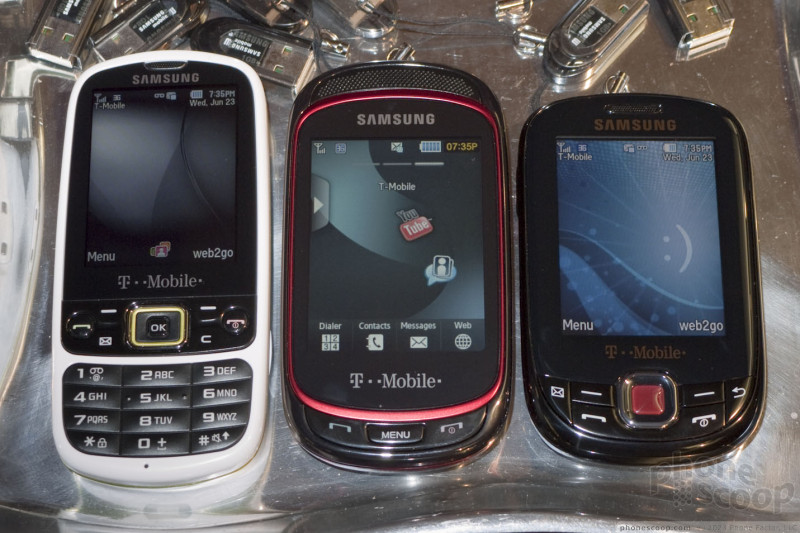


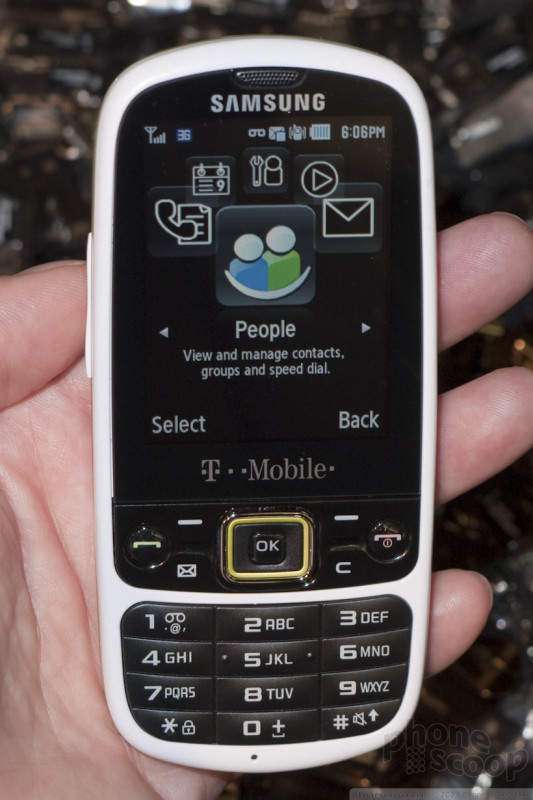







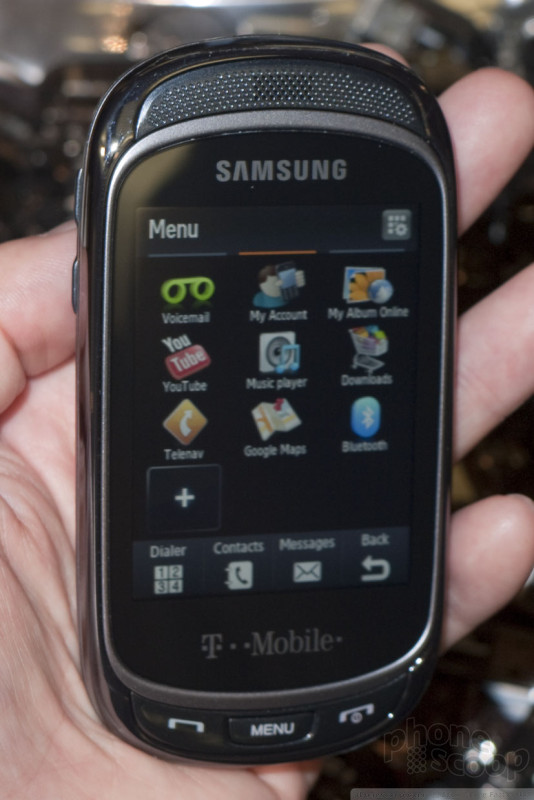







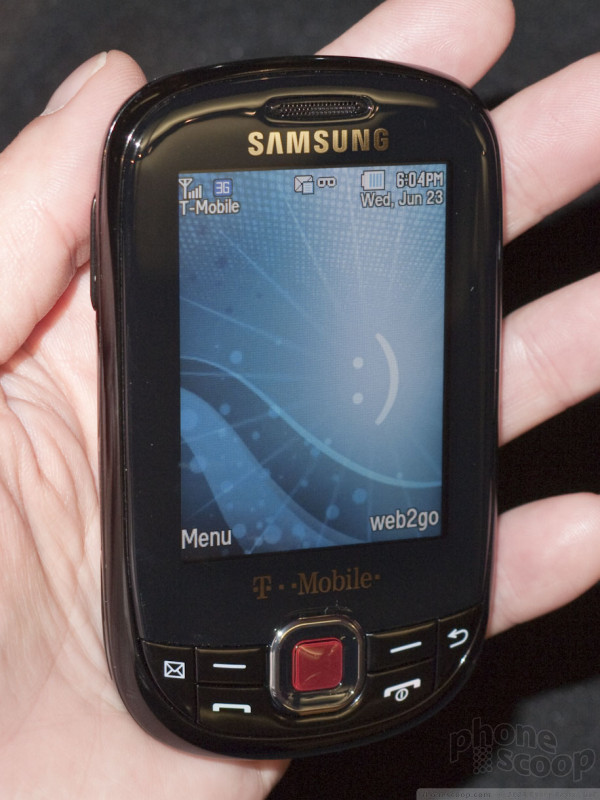










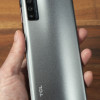 Hands On with the TCL 20 Series
Hands On with the TCL 20 Series
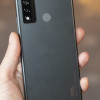 Hands On with the TCL 20 XE and TCL 20 A 5G
Hands On with the TCL 20 XE and TCL 20 A 5G
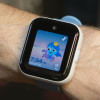 Hands On with the T-Mobile SyncUp Kids Watch
Hands On with the T-Mobile SyncUp Kids Watch
 Samsung Refreshes Galaxy S Series with S Pen, New Cameras
Samsung Refreshes Galaxy S Series with S Pen, New Cameras
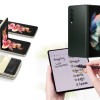 Samsung Updates Foldables with Water Resistance, S Pen
Samsung Updates Foldables with Water Resistance, S Pen

